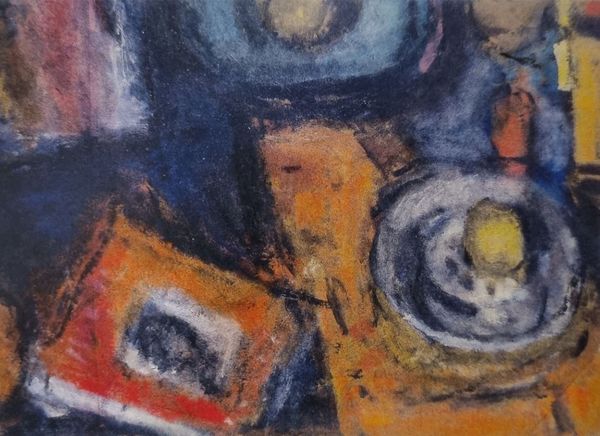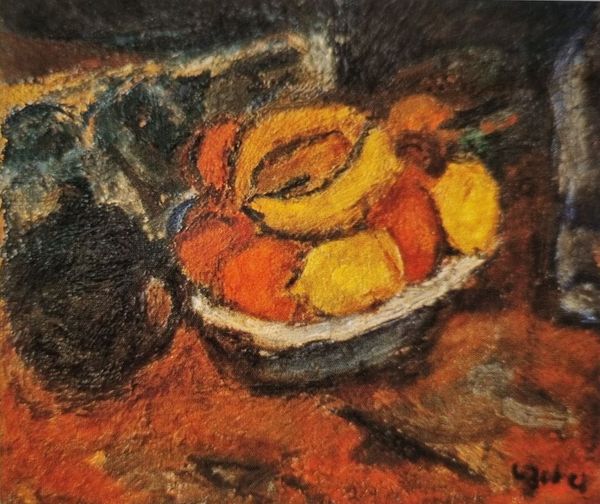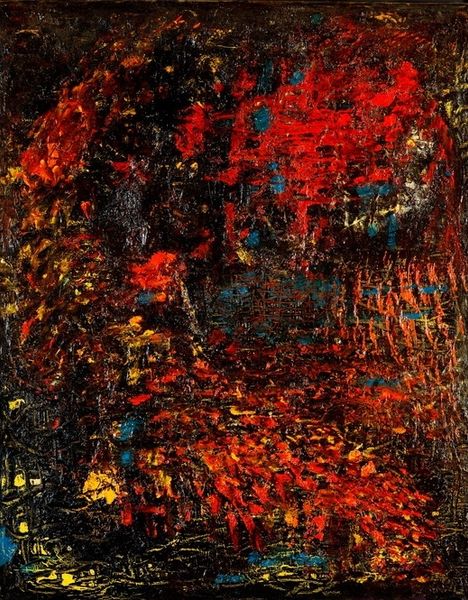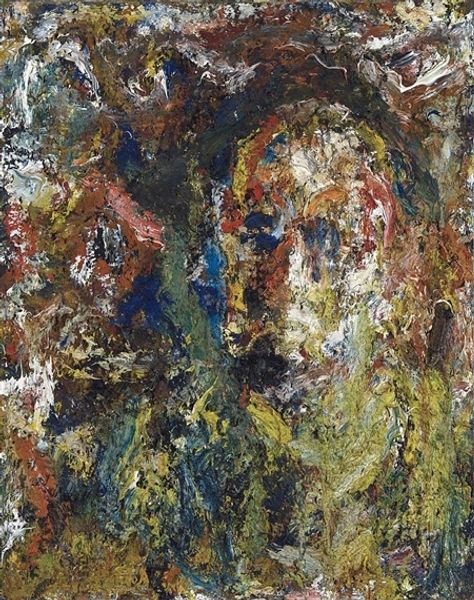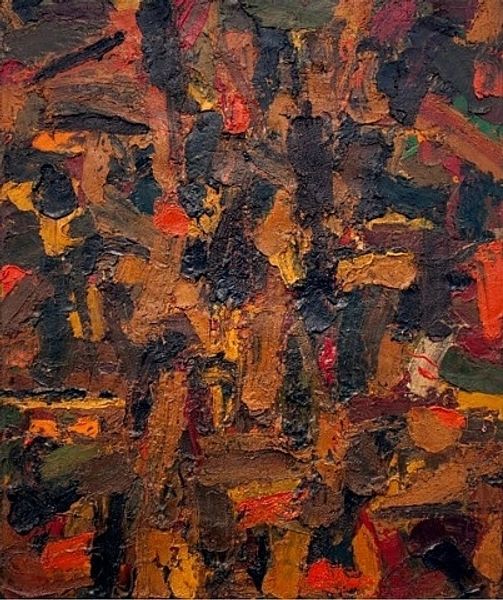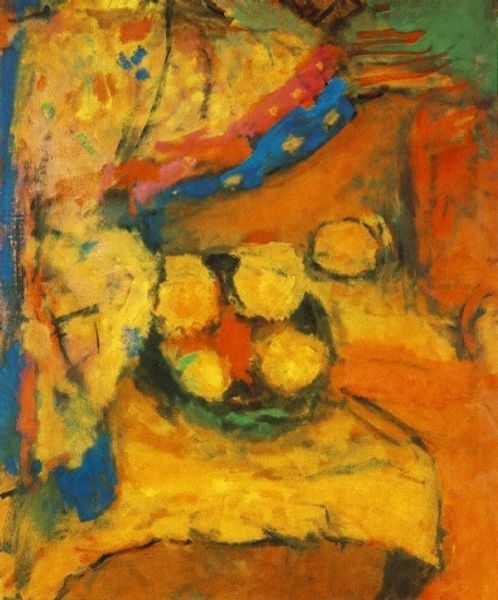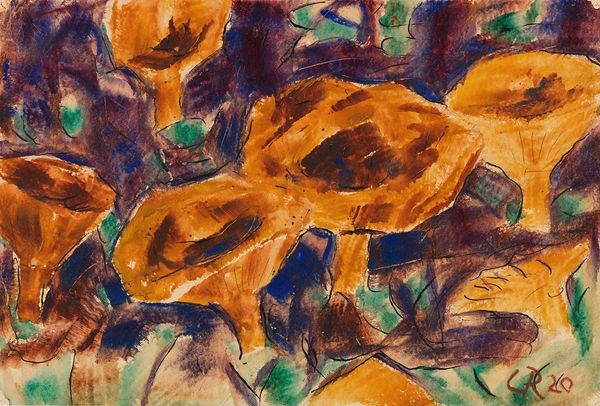
oil-paint, impasto
#
abstract-expressionism
#
abstract expressionism
#
oil-paint
#
oil painting
#
impasto
Copyright: Bela Czobel,Fair Use
Curator: Welcome. We’re standing before “Czóbel Béla Kancsó,” an oil painting with an impasto technique attributed to Béla Czóbel. Editor: It feels immediately visceral. Earthy tones, oranges and browns predominantly, with bold textures that really bring forward the materiality of the oil paint. It is heavy with feeling. Curator: Indeed. Czóbel’s manipulation of oil paint lends itself to considering his process. Notice the palpable sense of movement suggested by the strokes of the pallet knife—almost chaotic, even though depicting domestic subject matter, ostensibly. What’s your take on the symbolism here? Editor: Well, the 'kancsó', that central pitcher, can often be seen as a vessel. Considering the era, one can read into its cultural significance to be perhaps about domesticity, sustenance or tradition. The vibrant blue splash in the upper corner almost seems to suggest another object...possibly? Curator: Perhaps. And to broaden that scope a little bit, thinking about that domestic subject matter, its creation speaks to the broader access to resources Czóbel experienced. This reflects shifts in artistic patronage at the time, impacting not just who was making art, but what subjects they chose to depict. Editor: True. And within the historical context, a still life like this speaks quietly about the everyday while indirectly alluding to universal, ongoing human experiences. Curator: I agree, considering the artist’s choice of impasto with oil paint. The sheer amount of paint and the labor involved signal something significant. The medium enhances the tactile aspect and adds another layer of meaning. It’s not merely representing a vessel but emphasizing the act and process of depiction. Editor: It certainly draws attention to its status as an object in itself. Ultimately, the piece is complex. It’s grounded, referencing fundamental objects while simultaneously, I think, managing to be uplifting. Curator: A keen assessment, I feel. Reflecting on “Czóbel Béla Kancsó,” the way Czóbel worked with readily available resources prompts a reimagining of material production—which reveals profound dimensions related to access, labor, and intention. Editor: Absolutely. From the vessel's symbolism to the artist's application, there’s definitely an emphasis on historical relevance within something as deceptively "simple" as a still life. Thanks for elaborating.
Comments
No comments
Be the first to comment and join the conversation on the ultimate creative platform.
